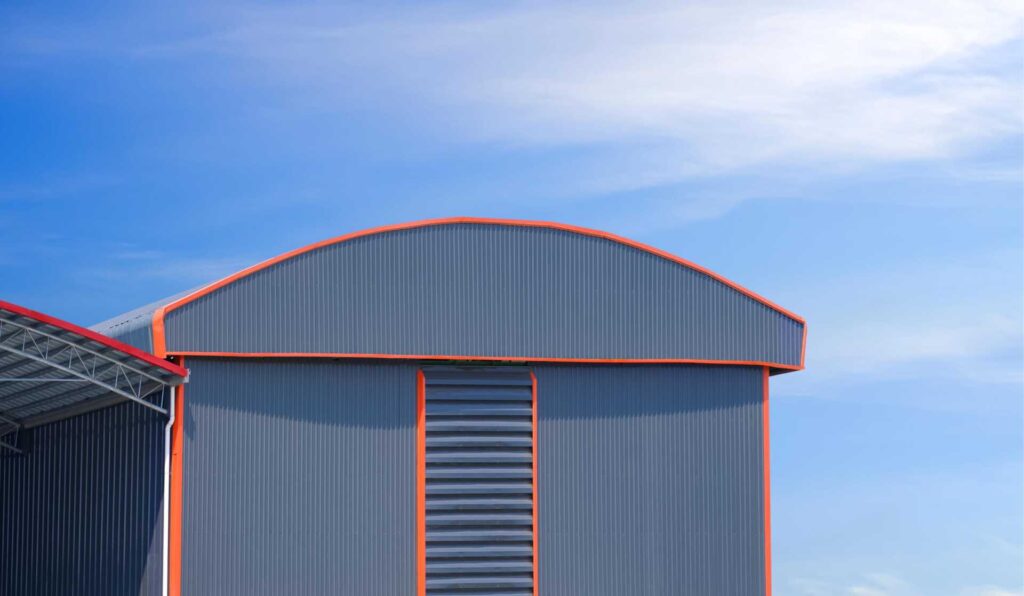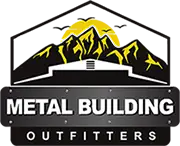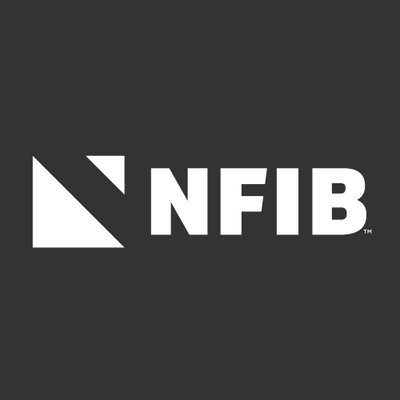
Contents
Imagine a sprawling farm, its metal structures gleaming under the sun, standing resilient against the elements. You know the right building can make or break an agribusiness, but what factors should you consider to ensure longevity and efficiency? As you explore the benefits of durable metal structures, you’ll uncover design innovations that enhance functionality and align with sustainable practices. The choices you make today could considerably shape your operations tomorrow, prompting you to rethink your approach to agricultural infrastructure.
Key Takeaways
- Choose high-quality, corrosion-resistant materials like galvanized steel to enhance durability and longevity in harsh agribusiness environments.
- Implement advanced design principles to ensure structural integrity and compliance with local regulations for safety and efficiency.
- Utilize modular designs to allow for future expansion and adaptability as operational needs change over time.
- Schedule regular maintenance and inspections to proactively address wear and prevent costly repairs, ensuring long-term durability.
- Incorporate insulated metal panels to regulate internal temperatures, protecting stored goods and improving energy efficiency.
Benefits of Metal Structures
Metal structures offer a range of advantages that make them ideal for agribusiness applications. One of the primary benefits is the cost advantages that metal provides over traditional building materials. Metal’s durability means lower maintenance expenses and longer life spans, reducing the total cost of ownership. When you invest in metal buildings, you’re likely saving on future repairs and replacements, which can be critical in the agribusiness sector where budgets can be tight.
Another considerable benefit is design flexibility. Metal structures can be engineered to accommodate various agricultural needs, from storage facilities to livestock housing. This adaptability allows you to customize dimensions, layouts, and features to suit your specific operational requirements. You can easily modify or expand your metal building as your agribusiness grows, ensuring you have the space you need without the constraints often imposed by other materials.
Additionally, metal’s lightweight nature facilitates quicker construction times, which is essential in an industry where timing can impact productivity. The speed of assembly can lead to earlier occupancy, enabling you to utilize the space effectively and capitalize on market opportunities.
When you choose metal structures, you’re not just opting for a building; you’re investing in a tool that aligns with your operational goals. With their cost advantages and design flexibility, metal structures can considerably enhance your agribusiness’s efficiency and adaptability, creating a strong foundation for future success.
Key Design Considerations
When planning a metal structure for agribusiness, several key design considerations can greatly impact its effectiveness and longevity. First, you need to adhere to solid design principles that ensure the structure can withstand the specific environmental conditions of your location. Factors such as wind loads, snow loads, and seismic activity should guide your material selection and structural layout.
Next, prioritize structural integrity in every phase of your planning. This involves choosing high-quality materials and integrating proper engineering practices. For example, verify that your joints and connections are robust, as these are often the weakest points in a structure.
Utilizing advanced design software can assist in analyzing load distributions and potential stress points, allowing you to make informed decisions that enhance durability.
Additionally, consider the intended use of the structure. Whether it’s for storage, livestock, or equipment, each purpose may require different design elements. Adequate ventilation, insulation, and drainage systems shouldn’t be overlooked, as they contribute greatly to the functionality and lifespan of the metal structure.
Lastly, don’t underestimate the importance of compliance with local regulations and building codes. These guidelines are designed to ensure safety and durability, aligning your project with community standards and expectations.
Customization Options Available
When considering customization options for your metal structures, you’ll want to focus on tailored design features that meet specific agribusiness needs.
You’ll also have various material selection choices that influence durability and performance, along with size and layout options to optimize space utilization.
Each of these factors plays a vital role in ensuring that your structure aligns with operational requirements.
Tailored Design Features
How can tailored design features enhance the functionality of metal structures in agribusiness? By incorporating custom features, you can greatly improve operational efficiency and adaptability.
Design flexibility allows you to create structures that meet specific agricultural needs, whether it’s for storage, processing, or equipment sheltering.
For instance, you might opt for adjustable ventilation systems to regulate temperature and humidity levels, which is essential for preserving the quality of stored grains or livestock.
Additionally, modular designs enable easy expansion as your operation grows, ensuring your investment remains viable in the long term.
You can also integrate features like reinforced flooring or specialized loading docks tailored to your equipment, enhancing both safety and workflow efficiency.
This adaptability aligns with your immediate requirements and anticipates future challenges, fostering resilience in your agribusiness.
In essence, custom features and design flexibility are indispensable in building metal structures that aren’t only durable and tailored to the unique demands of your agricultural operations.
Material Selection Choices
Custom features in metal structures lay the groundwork for effective material selection, which plays a vital role in their overall performance and longevity. When choosing materials, you’ll want to evaluate the specific steel grades that best meet your agricultural needs. High-strength steel grades can enhance the durability of your structures, allowing them to withstand harsh conditions while minimizing maintenance costs.
Corrosion resistance is another essential factor in your material choice. Metal structures exposed to moisture, chemicals, or varying temperatures require coatings or treatments that prevent deterioration over time. By selecting galvanized or stainless steel, you can greatly improve the lifespan of your investment, ensuring it remains functional and safe for years to come.
Moreover, customization options extend to the thickness and treatment of the steel, which can be tailored to your unique operational requirements. By focusing on these aspects, you’re not just building a structure; you’re investing in a resilient solution that aligns with your agribusiness objectives.
Involving experts in material selection strengthens your decision-making process, fostering a sense of belonging in a community dedicated to sustainable agricultural practices.
Size and Layout Options
The dimensions and arrangement of your metal structures greatly influence their functionality and efficiency in agribusiness. By carefully evaluating your size options and layout configurations, you can create an environment that maximizes productivity and meets your specific needs. Customization is key to achieving the best results.
Here are three important factors to keep in mind when determining your size and layout:
Operational Needs: Assess the types of equipment and livestock you’ll manage to ensure adequate space.
Future Expansion: Plan for growth by incorporating flexible designs that can adapt to changing demands.
Workflow Efficiency: Optimize traffic flow and accessibility by strategically positioning entry and exit points.
Selecting appropriate size options and layout configurations allows you to tailor structures that align with your agribusiness goals.
Whether you’re building a barn, storage facility, or processing plant, your decisions can lead to enhanced performance and longevity.
Embracing customization supports your current operations and fosters a sense of belonging within your community, ensuring that your agribusiness thrives for years to come.
Durability and Longevity
When building durable metal structures for agribusiness, material selection is essential for ensuring longevity.
You’ll need to take into account weather resistance features that protect against harsh environmental conditions while also implementing effective maintenance best practices.
Material Selection Importance
Selecting the right materials is essential for ensuring the durability and longevity of metal structures in agribusiness. Your choice directly impacts the performance and maintenance costs over time.
You should consider specific material properties and selection criteria to optimize your investment.
Here are three critical factors to evaluate:
Corrosion Resistance: Metals like galvanized steel or aluminum resist rust, extending the structure’s lifespan.
Strength-to-Weight Ratio: Materials such as high-strength steel provide robust support without excessive weight, allowing for flexible design options.
Thermal Conductivity: Choose materials that minimize heat transfer to maintain stable internal conditions for stored goods.
Weather Resistance Features
Choosing the right materials lays the groundwork for understanding how weather resistance features considerably contribute to the durability and longevity of metal structures in agribusiness.
When you invest in high-quality materials designed for storm resistance, you’re not just protecting your structure; you’re ensuring its functionality during extreme weather events. Metals like galvanized steel or aluminum can withstand heavy rainfall and wind, minimizing potential damage.
Temperature control is another critical aspect of weather resistance. Insulated metal panels can effectively regulate internal temperatures, safeguarding crops and livestock from the harsh effects of fluctuating external conditions.
By using materials designed for thermal efficiency, you enhance your structure’s resilience, reducing energy costs associated with heating and cooling.
Moreover, consider coatings that provide additional protection against corrosion and UV degradation. These features extend the lifespan of your structures, giving you peace of mind knowing they’re built to last.
Essentially, prioritizing weather resistance in your metal structures enhances their durability and supports the overall sustainability of your agribusiness, ensuring that you’re prepared for whatever the elements may throw your way.
Maintenance Best Practices
To ensure the durability and longevity of your metal structures in agribusiness, regular maintenance becomes essential.
Implementing a structured maintenance plan will extend the life of your structures and optimize their performance. Here are three best practices to evaluate:
Preventive Maintenance: Schedule routine upkeep to address potential issues before they escalate. This includes lubricating moving parts, tightening bolts, and checking for corrosion.
Routine Inspections: Conduct thorough inspections at least biannually. Look for signs of wear and tear, such as rust, dents, or structural shifts. Document your findings to track any recurring issues.
Cleaning and Protection: Remove debris, dirt, and moisture buildup to prevent corrosion. Use protective coatings as needed to shield the metal from harsh environmental conditions.
Cost-Effectiveness of Metal Buildings
Frequently, agribusinesses find that metal buildings offer a compelling, cost-effective solution compared to traditional construction methods. When evaluating your initial investment, it’s crucial to recognize that metal structures may have a higher upfront cost. However, this investment quickly pays off in the long term due to its durability and lower maintenance requirements.
Unlike conventional materials, metal withstands harsh weather conditions, reducing the likelihood of costly repairs. Moreover, metal buildings often have a longer lifespan, which directly translates to significant long-term savings.
These savings manifest in various ways, including reduced energy costs, as metal reflects heat and can be insulated more effectively. This energy efficiency lowers your utility bills and contributes to a greener operation, appealing to environmentally conscious consumers.
Another aspect to reflect on is the speed of construction. Metal buildings can be erected more rapidly than traditional structures, minimizing downtime and allowing you to start operating sooner. This efficiency can lead to quicker returns on your investment, further enhancing the overall cost-effectiveness of choosing metal.
Building Codes and Regulations
Building codes and regulations play an essential role in the construction of metal structures for agribusiness. Understanding these codes is critical for ensuring that your structures comply with legal requirements and provide a safe and efficient working environment.
By adhering to these standards, you can enhance the longevity and functionality of your facilities.
Here are three key aspects to take into account:
Zoning Laws: These laws dictate how land can be used and what types of structures are permissible. Before starting construction, check local zoning regulations to verify your planned agribusiness structure fits within the designated use.
Safety Standards: Compliance with safety standards is non-negotiable. These standards cover structural integrity, fire safety, electrical systems, and more. Regular updates to these standards mean you must stay informed to ensure your facility remains compliant.
Permitting Process: Securing the necessary permits is an essential step in the construction process. This involves submitting plans for approval and may require inspections during and after construction.
This helps ensure safety and compliance and protects your investment and livelihood.
Environmental Impact and Sustainability
Integrating environmental impact and sustainability into the construction of metal structures for agribusiness is vital for long-term success. By prioritizing sustainable practices, you enhance your structures’ durability and contribute positively to the environment. This approach helps mitigate the negative effects of industrial operations, ensuring that your business aligns with contemporary environmental regulations.
When designing metal structures, consider using recycled materials. This reduces waste and lowers the carbon footprint associated with new material production. Additionally, selecting energy-efficient manufacturing processes can minimize resource consumption, making your structures more sustainable.
Implementing rainwater harvesting and solar energy systems can further enhance sustainability by reducing reliance on non-renewable resources.
Compliance with environmental regulations is essential. These regulations often dictate how materials are sourced, how waste is managed, and how emissions are controlled. By adhering to these guidelines, you avoid potential fines and position your agribusiness as a responsible entity that values ecological integrity.
Moreover, adopting sustainable practices fosters community engagement and enhances customer loyalty. Today’s consumers are increasingly inclined to support businesses that demonstrate a commitment to environmental stewardship. By promoting your sustainable initiatives, you can cultivate a strong sense of belonging among your customers and stakeholders.
Ultimately, investing in environmentally responsible construction practices for your metal structures isn’t just about compliance—it’s about setting a standard for future generations in agribusiness. Embrace sustainability, and you’ll build a resilient foundation for your enterprise.
Maintenance Tips for Metal Structures
Regular maintenance of metal structures is essential to ensure their longevity and structural integrity.
By implementing a proactive maintenance routine, you can prevent costly repairs and assure the safety of your operations.
Here are three key maintenance tips that you should consider:
- Conduct Regular Structural Inspections:
Schedule routine inspections to identify any signs of wear and tear. Look for signs of corrosion, cracks, or misalignments that could compromise the structure’s stability. Early detection can prevent larger issues down the line.
- Implement Rust Prevention Measures:
Protect your metal structures from rust by applying appropriate coatings and sealants. Regularly check for chipping or peeling paint and address it promptly. Consider using rust-resistant materials or galvanized steel, which can greatly extend the life of your structures.
- Clean and Maintain Surfaces:
Dirt, debris, and moisture can accelerate corrosion. Clean surfaces regularly to remove potential contaminants. Assure gutters and drainage systems are functioning properly to prevent water accumulation, which can lead to rust formation.
Recap
In the world of agribusiness, choosing durable metal structures is like planting seeds for a fruitful harvest. By investing in these resilient buildings, you’re not just securing a shelter; you’re ensuring the longevity and efficiency of your operations. With custom designs that cater to your specific needs and a commitment to sustainability, your metal structure can withstand the test of time. Embrace this forward-thinking approach, and watch your agribusiness thrive, rooted in strength and innovation.
Recent Posts
10 Tips for Custom Metal Farm Building Designs
When you’re starting on the journey of designing a custom metal farm building, it’s important
Tailored Metal Building Designs for Farms
You might wonder how custom designs can specifically address your unique agricultural challenges while also
What Are Durable Metal Structures for Livestock?
Imagine a fortress standing tall against the elements, safeguarding your livestock with unwavering strength. You


